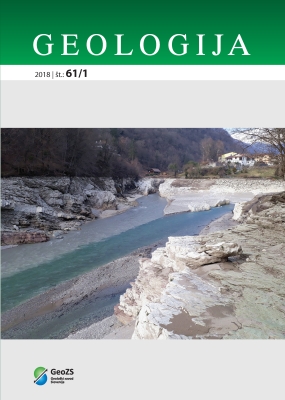Results of the geointerpretation research in the frame of the Danube GeoTour project
DOI:
https://doi.org/10.5474/geologija.2018.007Abstract
Crossborder Karavanke/Karawanken UNESCO Global Geopark was established in 2011, and in 2013, it became a member of the European- (EGN) and Global Geopark Network (GGN). Its administrative boundary follows the boundaries of 14 municipalities on the Slovenian and Austrian sides. Since the early beginning, the sustainable tourism throughout the region has been developed. An important component of the Geopark activities is applying for various funding to support the regional development through the transnational cooperation between European Geoparks or through Geopark-specific projects. An example of the transnational cooperation is the project Valorisation of geo-heritage for sustainable and innovative tourism development of Danube Geoparks. Eight Geoparks of the Danube region participate in this project with the acronym Danube GeoTour, implemented in the INTERREG Danube Transnational Programme 2014-2020. The main goal of the project is establishment of the joint Danube GeoTour designed to strengthen cooperation between the regions’ Geoparks and act as an innovative tourism product to accelerate visibility and tourist visits in the Geoparks. Common strategy for sustainable management of tourism pressures will form the basis for creating innovative geoproducts. Sharing experiences, testing pilot geotourism products and new interpretative approaches should increase local inhabitants’ engagement, Geopark management capacities and lower the quality gap between Danube and other European Geoparks. Within the Danube GeoTour project, Karavanke/Karawanken UNESCO Global Geopark implemented a research “New competences in geoheritage interpretation”. The aim of the project is to find out how to improve skills and quality of the heritage presentation in the participating Geoparks by transnational learning interaction, and to complement the uniqueness and character of the overall Danube GeoTour product. The main research objective was the introduction of new interpretation trends, techniques and methods which are used in the presentation of geoheritage, observed within and outside the participating Geoparks.Downloads
How to Cite
Modrej, D., Fajmut Štrucl, S., & Hartmann, G. (2018). Results of the geointerpretation research in the frame of the Danube GeoTour project . Geologija, 61(1), 101–110. https://doi.org/10.5474/geologija.2018.007
Issue
Section
Articles

